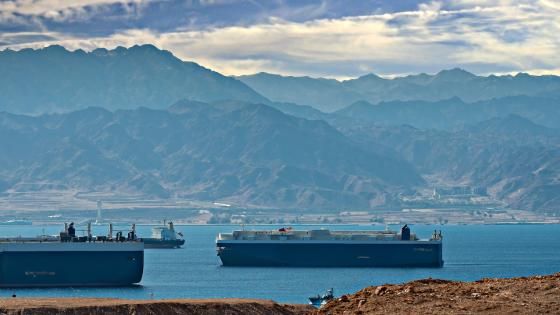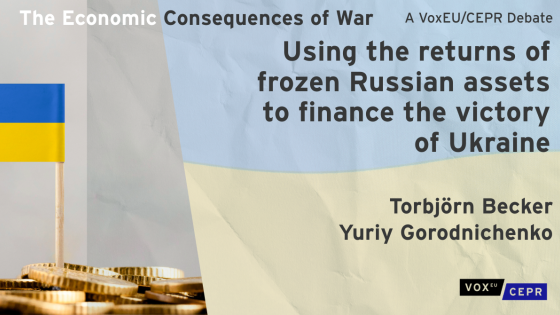The Global Crisis provoked a deep drop in trade in 2009. While levels have recovered, the trade-to-GDP ratio has not resumed its decades-long upwards trend (WTO 2013). Based on a massive data collection effort since the St. Petersburg G20 summit last September – in which a further 2,001 trade-related state initiatives have been documented – the 16th Global Trade Alert (GTA) report demonstrates that the retreat to protectionism has been stronger than previously thought (Evenett 2014). The principal findings are as follows:
- There have been three phases of crisis-era protectionism:
- A surge in 2008 and 2009;
- A fall in the rate of new measures imposed as the prospects for the global economy brightened in 2010 and 2011; and
- An acceleration once the slowdown in global growth became apparent in 2012.
- The worldwide resort to protectionism in 2013 exceeded that seen in 2009, the year when many G20 leaders expressed fears about openness.
- The G20’s imposition of new protectionist measures jumped in 2009, never fell back to 2008 levels, and has ratcheted up over time – reaching nearly 500 new protectionist measures imposed in 2012 alone.
- Since the St. Petersburg summit the G20 nations have implemented 457 protectionist measures, amounting an average of one harmful act every 23 hours.
- Worldwide protectionist totals for 2008 and 2009 have now been revised up by over 30%. For 2010 and 2011 the number of documented instances of new protectionism is now 45% higher than reported two years ago. The number of documented instances of new protectionism during 2012 and 2013 is now 95% higher than known at time of the St. Petersburg G20 summit.
- The number of hits to Chinese commercial interests since November 2008 is now 158% higher than reported before the St. Petersburg summit. In percentage terms, the upward revision in total number of hits to the European Union’s commercial interests is even higher.
- Since the crisis began Chinese commercial interests have been harmed by foreign protectionism every 29 hours on average. Every 18.5 hours a protectionist measure is taken somewhere in the world that harms the G20’s exporters, investors, and workers. The protectionist clock is ticking.
- The WTO’s reports on protectionism substantially underestimate the G20’s resort to trade barriers. On the cleanest like-for-like comparison the Global Trade Alert (GTA) finds 44% more instances of G20 protectionism.
- Widely-reported WTO totals of crisis-era protectionism are now only one third of the worldwide total found by the Global Trade Alert.
Three phases of crisis-era protectionism
A fuller picture of protectionism comes from the expansion of the GTA database to include information on a total of 5,785 crisis-era state interventions. Figure 1 shows quarter-by-quarter the number of new protectionist measures imposed worldwide – and critically, how those totals have been revised up sharply over the past year. Looking at the quarterly totals reported in the 10th and 11th GTA reports (before the Cannes and Los Cabos summits, respectively), the number of protectionist measures peaked in Q1 2009 and declined thereafter. Some observers may have interpreted this as implying that the protectionist impulse at the beginning of 2009 was contained.
Figure 1. Upward revisions in total number of protectionist measures implemented per quarter, by GTA report

With the new evidence collected for this report it becomes clear that the protectionist impulse has not abated. Since Q1 2012 the number of new protectionist measures implemented has risen, so much so that in 2013 more new protectionism was imposed than in 2009. The latter finding is all the more remarkable as the GTA team has had nearly six years to collect data on developments in 2009 and less than two years to identify protectionism in 2013. Reporting lags matter, and the initial quarterly totals for 2014 do not provide much grounds for optimism either.
In the light of the evidence presented in Figure 1, three phases in crisis-era protectionism can be identified.
- The earliest phase, starting from the first crisis-era G20 summit in Q4 2008 through to the end of 2009, witnessed a spike in protectionism in Q1 2009. Then the quarterly totals of new protectionism fell, but never below 150 new measures per quarter.
- The second phase relates to 2010 and 2011 and coincided with growing optimism that the world economy would soon recover. During this intermediate phase the quarterly totals for new protectionism lay in the 140 to 160 range.
- After that, a third phase began in Q1 2012 when quarterly resort to new protectionism steadily rose, peaking at 200 in Q4 2012.
Protectionism creates victims and the commercial interests of the major trading nations have been harmed much more than previously thought. Figure 2 summarises the extent to which the number of hits to the commercial interests of China, the European Union, Japan, and the United States have been revised upwards since the Los Cabos summit in June 2012. In the case of China, Los Cabos documented 698 occasions where foreign protectionism harmed Sino commercial interests. Now that total has been revised up to 1804 – a 158% increase. The upward revision in the incidence of harm to the EU’s commercial interests is even larger in percentage terms.
Figure 2. The commercial interests of the major trading powers have been hit much more often than previously reported

Note: *Annualised rate.
The G20’s record on protectionism deteriorates further
Figure 3 reveals the contribution of the G20’s protectionism towards the worldwide totals for the years since 2008. Every year the G20 was responsible for over half of new protectionist acts worldwide. What is particularly interesting about Figure 3 is that – unlike the sharp cut back in the number of new protectionist measures implemented by non-G20 members during 2010 and 2011 – the number implemented by the G20 increases steadily over time.
Figure 3. Annual incidence of protectionism since 2008, by G20 group and by the Rest of the World

The last GTA report introduced a comparison between the G20 group’s protectionist record and that of the next 10 largest trading nations that are neither members of the G20 nor of the European Union. The latter group are referred to here as the Next 10.1 Since the Next 10 countries did not commit collectively to eschew protectionism, the purpose here is to assess whether the G20 performed better than the Next 10, implying perhaps more restraint. Six metrics were developed relating to:
- the share of crisis-era measures affecting commerce that were protectionist,
- the share of protectionist measures still to be unwound,
- the share of all product categories affected by protectionism, and
- the share of protectionist measures that do not take the traditional form of tariffs or actions against so-called unfair imports.
To facilitate comparison these six metrics are plotted on a radar diagram where distance from the centre of the radar indicates a worse protectionist record. To compare performance over time, information on the G20 and Next 10 available now and before the St. Petersburg summit were plotted in Figure 4.
Figure 4. Other than the resort to ‘murky’ protectionism, G20 countries are more protectionist than the Next 10 largest trading nations – and the G20’s relative performance has worsened over the past year

The expansion in the coverage of the GTA’s database during the past year had little impact on the Next 10’s protectionist record—shown by the fact that lines relating to the Next 10 in Figure 4 for last year and now, by and large, overlap. Having said that, the share of state measures implemented by the Next 10 that were protectionist is now higher, although this increase is less than the rise in the same share for the G20. Moreover, since the St. Petersburg summit the G20 has implemented a higher proportion of protectionist measures than the Next 10. Relative to the Next 10, the G20’s protectionist record has worsened, overall and during the past year.
In sum, the G20’s record on protectionism is now worse than what it was at the time of the St. Petersburg summit, both in absolute terms and relative to a group of medium-sized trading nations that made no pledges to eschew protectionism. That the G20’s resort to protectionism has ratcheted up ever since global economic growth prospects dimmed is particularly worrying given recent near-term IMF forecasts for the world economy.
Towards a global trade disorder
Despite an elaborate architecture of official surveillance – and the WTO’s much vaunted Dispute Settlement procedures – G20 members have consistenly imposed measures that harm the interests of trading partners and distort the commercial playing field. The question arises as to how G20 governments get away with it. Perhaps the answer lies in the expression “people who live in glass houses shouldn’t throw stones.” Has the extent of crisis-era protectionist reached such levels that each G20 member dare not criticise another for fear that their own protectionism will be attacked?
Neither the G20 nor the WTO has come to grips with protectionism. The fragmentation of global markets along national lines is much worse than previously reported. Until G20 leaders realise that actions matter and not words, there is little stopping the slide towards global trade disorder, in which competition based on merits gives way to a debased form of globalisation.
Reference
Evenett, Simon J (2013), What Restraint? Five years of G20 Pledges on Trade. The 14th GTA Report. CEPR. September.
Evenett, Simon J (2014), The Global Trade Disorder. The 14th GTA Report. CEPR. September.
WTO (2013), "Trade to remain subdued in 2013 after sluggish growth in 2012 as European economies continue to struggle", Press release, 10 April.
Endnotes
[1] For more details concerning this comparison see pages 4 and 5 of Evenett (2013).






